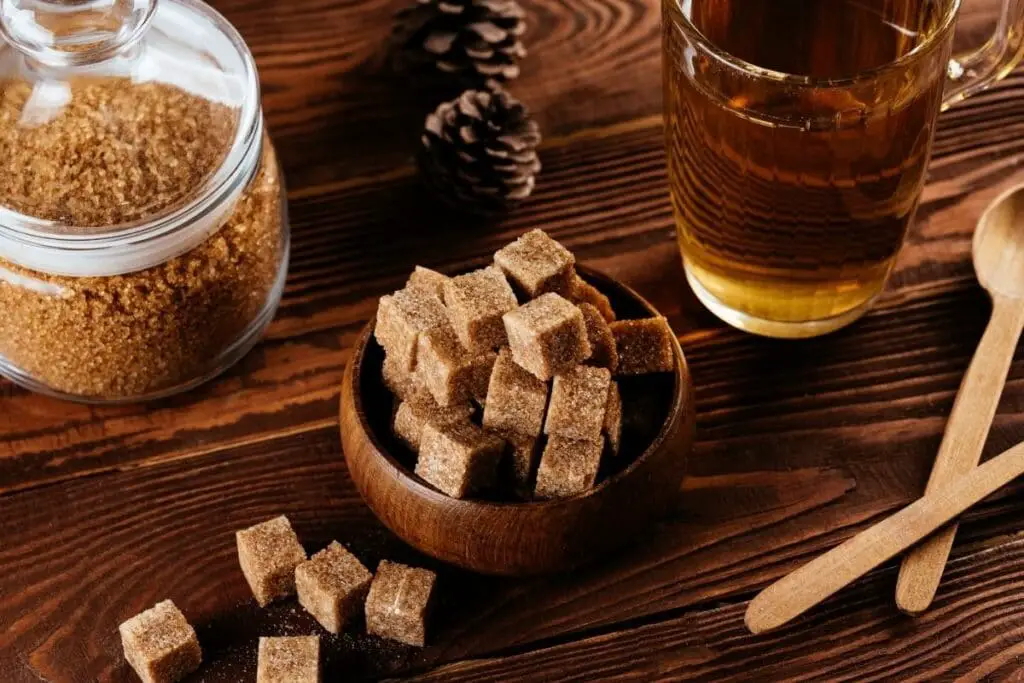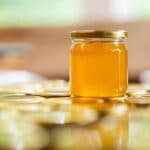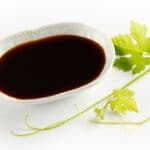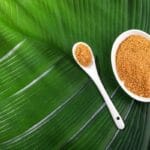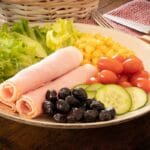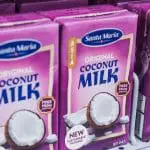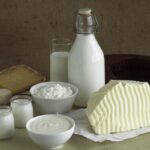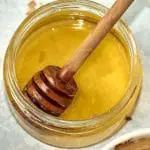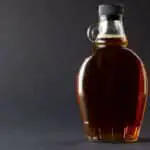Key points:
- Options for brown sugar substitutes include DIY versions using molasses and white sugar, using white sugar as a direct swap, or using maple syrup, coconut sugar, muscovado sugar, turbinado sugar, date sugar, palm sugar, or maple sugar.
- Liquid sweeteners like honey, agave, and maple syrup can be used, with adjustments, for non-baked recipes.
- For diabetics, stevia, tagatose, and sucralose are low-calorie, low-impact alternatives.
In addition to sweetness, brown sugar is specifically added to recipes for its unique caramel-like flavor and additional moisture. It gives cookies a chewy texture and adds richness to cakes.
If your recipe calls for these sweet brown granules and you only have a spoonful left in the jar, there are plenty of alternatives you can use instead of rushing to the store or canceling your cookie fiesta altogether. In this guide, you’ll discover what makes brown sugar different and how to replicate those qualities in your dish with the best brown sugar substitutes.
What is Brown Sugar?
Both white and brown sugar are made from sugarcane or sugar beet. The crops are pressed to extract their sweet syrup. The syrup is purified and heated to create a concentrated syrup called molasses.
A centrifuge machine is used to separate crystals from molasses with a fast spinning action. White sugar is processed further to create smaller crystals by removing any excess molasses and runs through a filtration system.
Unrefined brown sugar undergoes less processing which allows it to retain some of the natural brown color and molasses while more commonly used refined brown sugar is essentially white sugar with some molasses added back into it to give it a moist consistency, and caramel flavor.
Brown sugar can be either light brown or dark brown, depending on the amount of molasses present. Light brown types contain approximately 3.5% molasses while the dark brown variety has closer to 6.5%. The darker type has deeper caramel notes with higher moisture content, but they can easily be used interchangeably without a problem.
Sugar in Baking: Which is Best?
The white and brown crystals aren’t only different in color but in flavor and moisture-retaining properties as well. They can often be used interchangeably. Light and dark brown sugar can however have a different effect on certain dishes, especially baked goods.
Brown sugar contains more moisture than its white counterpart due to the present molasses. This means that baked goods will have a denser, softer, and chewier texture as opposed to a crispy, crumbly texture. The flavor may also be a little different with deeper caramel undertones.
White sugar is best used for recipes where a good, light, and airy rise is essential such as meringues, mousse, certain cakes, and souffles. It is also a little sweeter. Regular brown sugar is better for chewy cookies, denser bakes such as zucchini bread, fruit cake, flavor-rich glazes, and sauces including butterscotch and bbq sauce.
In items that are light-colored, the brown granules will deepen the color slightly. This is especially noticeable when sprinkled over cookies or even donuts.
DIY Brown Sugar
If you have some molasses and white granulated sugar around you can easily make your own brown sugar. Use one cup of granulated sugar mixed well with 1 tablespoon of molasses to make a light brown sugar alternative.
For dark brown sugar with a more intense toffee-like flavor and extra moisture, use 2 tablespoons molasses to one 1 cup white sugar. Mix the molasses well to distribute it evenly throughout the crystals and replace measure for measure in any application.
Best Replacement for Brown Sugar
White Sugar
We’ve already discussed the differences between the white and brown granules above, so you may be wondering if it is suitable to use just white sugar as an alternative. Of all the recommended substitutes this is likely the ingredient that is sitting in your pantry for the easiest, trouble-free substitution.
You can replace the white version cup for cup in a direct swap. Just remember that it has less moisture. This means that when used in baked items the cookies or cake will not be as soft and may even have a crispier texture depending on the amount required. When it comes to sauces, glazes, and small amounts in cooking, this won’t make much of a difference.
DIY with Maple Syrup
In the homemade brown sugar substitute above, molasses is used since this is authentically the product added to white sugar to make the brown version. If you want to make brown sugar without molasses, use maple syrup instead for just as good an outcome that will hardly be detectable.
Add 1 tablespoon of maple syrup to 200 grams (or one cup) of granulated white sugar. Mix evenly through the crystals and replace in equal measure. As with the DIY molasses version, this is a suitable substitute in any application including baking and sauces or dressings.
Coconut Sugar
Coconut sugar, also called coconut blossom sugar, are granules with a light brown color that will be found in the health section of your grocery store or at a health food store. Made from the sap of coconut trees, it has a similar appearance and can be replaced in equal quantities.
Since it comes from the tree and not the coconut itself, it does not have a coconut flavor and will not affect the flavor of your dish.
It doesn’t hold as much moisture which may result in a slight change of texture in baked items. If you find the batter is not as moist as it usually is, add a teaspoon of extra fat (such as soft butter) to the mixture to help attain the softer consistency.
Note: If you are making a cake that does not include fats, such as angel food cake, for example, do not add in any fat as this will affect the rise and texture negatively. Only add the extra teaspoon of butter if the batter includes fats in the recipe already and if it seems slightly on the dry side.
Muscovado Sugar
With its dark brown color and moisture-rich consistency, muscovado contains more molasses than brown sugar giving it a rich caramel taste. Muscovado is minimally refined and adds a great depth of flavor to soft baked items. With its high moisture content, it is best to sift it into your mixture to remove and prevent clumps.
Replace muscovado measure for measure in your recipe but be aware that if you are baking something that is intended to be crispy, it may come out on the soft side instead due to the increased moisture. A light muscovado will be the optimal choice.
Turbinado Sugar
As opposed to muscovado, turbinado is a drier raw sugar. The coarse light brown granules don’t always mix as smoothly into batters. This makes it less ideal for baked items with a delicate texture and more suited for crunchy cookies where a little graininess won’t be detectable.
You can, however, grind the coarse crystals in a spice grinder or with a mortar and pestle to refine the size for smoother integration that won’t have any effect on the texture. If you don’t have a grinder, partially dissolve the granules in a small portion of the recipe’s liquid component before adding to the rest of the ingredients to prevent any grittiness.
When used in a sauce, glaze, or dressing, you can use the granules as they are since they will eventually dissolve into the liquid. Just ensure you stir the mixture enough to dissolve the granules entirely.
Demerara is another similar raw, minimally processed alternative that has the same light brown color and mild caramel flavor. Both these raw sugars can be used as a replacement in equal quantities.
Date Sugar
This is another less-refined alternative that you may find in health food stores. It is made from ground and dehydrated dates. You can replace this in equal quantities. Dates are naturally very sweet, so if you don’t want your baked items to be too sweet, only use 2/3 of the amount required. These granules don’t dissolve when added to drinks, so this option is best used for baking and not sweetening drinks.
Palm Sugar
Although sometimes also referred to as date palm sugar (depending on the tree it is derived from), this is not the same as date sugar. This product is sold in a solid cone form or thick paste.
The natural sugar needs to be shaved or chopped before being added as a sweetener and is best used in sauces and commonly to sweeten Asian dishes. It has deep caramel notes, with a low melt temperature and can burn quickly when exposed to high heat.
Maple Sugar
This is basically the granulated form of maple syrup so be aware that it is quite sweet. It does add a great flavor boost with its rich maple notes but is not as moisture-rich. This could potentially mean your baked items may not be as soft or chewy as intended. You can use this in equal quantities for sauces, dressings, and baking.
Syrups and Liquid Sweeteners
Liquid sweeteners such as honey, agave nectar, and maple syrup work best in sauces, glazes, and other non-baked recipes. If it’s the only option you have, you can use them in baked goods but you’ll have to make some adjustments to your recipe to compensate for the fact that they are liquid substitutes as opposed to granules.
Agave is often used as a vegan replacement for honey since it is made from the leaves of an agave cactus. Its color can be similar to that of honey or maple syrup.
Two other types of syrup that you can use are barley malt syrup which is somewhat reminiscent of molasses and brown rice syrup which is less sweet than most other liquid sweeteners.
When using a liquid sweetener consider the level of sweetness required as some are sweeter than others. For every cup of brown sugar required in your recipe use only 2/3 cup of the syrup. You will also need to reduce the other liquid in your recipe by ¼ cup (60ml).
Keep a close eye while cooking since these types of alternatives may caramelize faster and therefore burn faster too. This may require reducing cooking time by just a few minutes.
Best Diabetic-Friendly Substitute for Brown Sugar
If you’re diabetic or watching your calorie intake and feeling a little left out with the options above, we’ve got three more solutions that will allow you to enjoy all the same baked goodies, sauces, and yumminess too.
Stevia
Stevia is derived from stevia plant leaves and in its powder or liquid form it is sweeter than brown sugar. Stevia will cost you a little more than regular sugar but since it doesn’t raise blood sugar levels and is extremely low in calories, it is worth it for diabetics.
If you need a brown sugar replacement for baking, opt for a granular stevia product specifically made to use in baking. These products have some bulking agents which means you can substitute it cup for cup.
Stevia liquid or fine powder on the other hand will require a recipe makeover as you’ll only need about 1 teaspoon stevia to replace a cup of brown sugar and will need to add a bulking agent such as applesauce to make up the volume. Because stevia has less calories and you only need to use a little, it is a healthy alternative to brown sugar.
Tagatose
Tagatose is derived from lactose and is also found in small amounts in certain fruits. It has a low glycemic index with little impact on blood glucose and insulin levels. Tagatose granules can be replaced in equal quantities and is best used in recipes that only require a small amount of sweetening.
Sucralose
You are probably more familiar with the name brand Splenda than sucralose. The powder form is a lot sweeter than sugar, so when baking it is best to use the granular form which has specifically been designed to use in cookies, cakes, brownies, and pies.
Although the granular form can be replaced in equal quantities, it generally results in a faster bake so keep an eye and pull it out the oven a few minutes early if it’s done. Unlike some other artificial sweeteners, sucralose doesn’t lose or change in flavor when cooked which makes it our number one choice for diabetics when baking.
FAQ
Butterscotch is traditionally made with brown sugar. If you only have white granules, use a recipe specifically created for making butterscotch with white sugar as opposed to doing a straight swap.
The best substitutes include stevia, sucralose, and xylitol.
You can use golden syrup, however only use 2/3 of the required quantity and if you are baking reduce the liquids in the recipe further by ¼.
Yes you can, but keep in mind that the final texture and flavor of your dish/recipe will be slightly different.
To mimic the flavor of brown sugar without using actual sugar, combine a sweetener like molasses or maple syrup with a sugar-free granulated sweetener like erythritol or stevia. Adjust the amounts to achieve the desired sweetness and depth of flavor similar to brown sugar.
Conclusion
Regardless of the reason you’re looking for a good substitute for brown sugar, there are multiple options to choose from. Lower calorie options include stevia, sucralose, and tagatose while less refined options include demerara, date sugar, or turbinado.
If you’re prioritizing an exact flavor match, make your very own DIY brown sugar. Always taste to determine the level of sweetness before adding your replacement in with the rest of the ingredients. Now it’s time to satisfy that sweet tooth.
See more:
*image by Cavan/depositphotos
